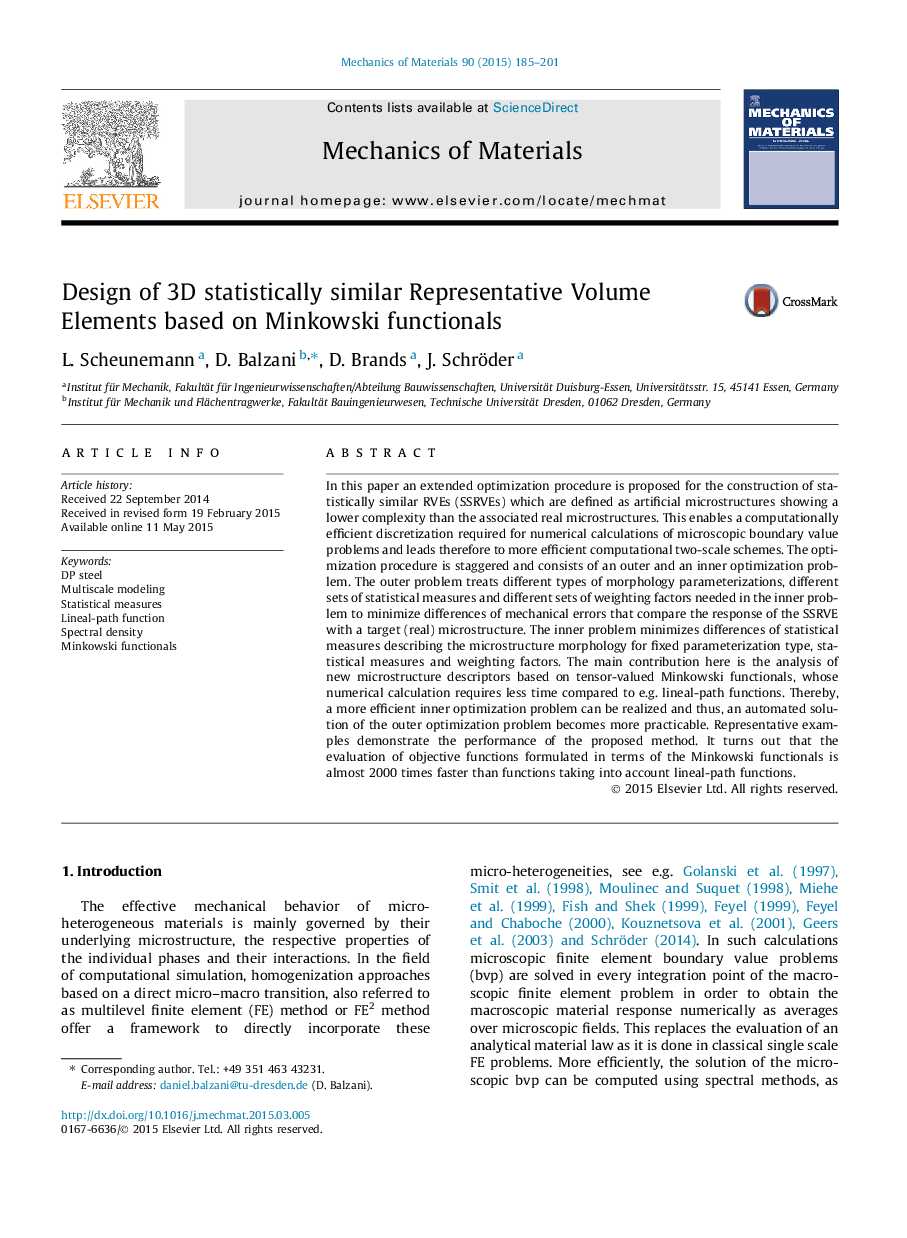| Article ID | Journal | Published Year | Pages | File Type |
|---|---|---|---|---|
| 797525 | Mechanics of Materials | 2015 | 17 Pages |
•Extended optimization problem is proposed for the construction of SSRVEs.•New measures for microstructure description are proposed.•New measures are defined in terms of Minkowski functionals.•Comparative analysis is performed showing the efficiency of the new measures.•Rotation-symmetric inclusion geometry is studied to eventually further simplify RVEs.
In this paper an extended optimization procedure is proposed for the construction of statistically similar RVEs (SSRVEs) which are defined as artificial microstructures showing a lower complexity than the associated real microstructures. This enables a computationally efficient discretization required for numerical calculations of microscopic boundary value problems and leads therefore to more efficient computational two-scale schemes. The optimization procedure is staggered and consists of an outer and an inner optimization problem. The outer problem treats different types of morphology parameterizations, different sets of statistical measures and different sets of weighting factors needed in the inner problem to minimize differences of mechanical errors that compare the response of the SSRVE with a target (real) microstructure. The inner problem minimizes differences of statistical measures describing the microstructure morphology for fixed parameterization type, statistical measures and weighting factors. The main contribution here is the analysis of new microstructure descriptors based on tensor-valued Minkowski functionals, whose numerical calculation requires less time compared to e.g. lineal-path functions. Thereby, a more efficient inner optimization problem can be realized and thus, an automated solution of the outer optimization problem becomes more practicable. Representative examples demonstrate the performance of the proposed method. It turns out that the evaluation of objective functions formulated in terms of the Minkowski functionals is almost 2000 times faster than functions taking into account lineal-path functions.
